Chapter 48
Life in Ketchikan
Previous Post | Next Post
Table of Contents
We loaded back onto our bus and started the journey into town. This was actually a different bus than we’d taken to the dock earlier in the day, and it had a different driver. Since she couldn’t be sure what sort of history we’d heard from our first driver during his spiel, she decided to approach it from a different angle. Rather than recounting general details about Ketchikan, she told us stories about what it’s like to live in the town.
It was actually fascinating to hear stories about this place that is so far removed from the rest of the country. She told us that her family moved to the area in the 1980s as part of a program to bring doctors and nurses to the town in exchange for repaying their student loans. If that sounds familiar, it’s almost the exact plot of the TV series Northern Exposure. We just didn’t realize that sort of program actually existed!
This gal was home from college for the summer (she attended some university in the “lower 48”) and was saying she was glad to be back home amongst the tight-knit community. Growing up in this part of Alaska sounds unlike anything we experienced in Colorado. Since it is so remote, kids need to learn how to survive in the wilderness fairly early in life. She told us about multi-day nature excursions that the schools take starting in middle school. Apparently in high school, they also make the students survive in the wild for a week so that they will be equipped if they ever get caught in a freak storm or something.
Since all the cities along the Northwest Passage are so spread out, the various sports teams actually need to fly to their away games, so she told us about traveling all around the state in high school.
Being so isolated also makes it difficult to easily access modern amenities. Rather than being able to easily get new supplies at the drop of a hat, they need to wait until the barges came to town with packages. Everything is much more expensive in Alaska, she said. For example, instead of their McDonald’s having a dollar menu, it’s a “two-dollar menu.” And Subway boasts about its $10 footlong menu.
In spite of all these perceived inconveniences, however, she seemed really happy to have grown up in Ketchikan. She mentioned the rain, of course, and said that it would limit the sorts of activities that young people could enjoy. She also expressed a genuine joy, however, for the role that tourism plays in the local economy. She spoke of the town with obvious pride, and it made me even more fond of Ketchikan than I already was.
The sights on our trip back to town weren’t particularly exciting, so I didn’t get any pictures, but once we were back to Ketchikan proper, I whipped out the camera. I really liked how they were flying the DCL flag.

We got dropped off near the ship but immediately made our way back toward town.
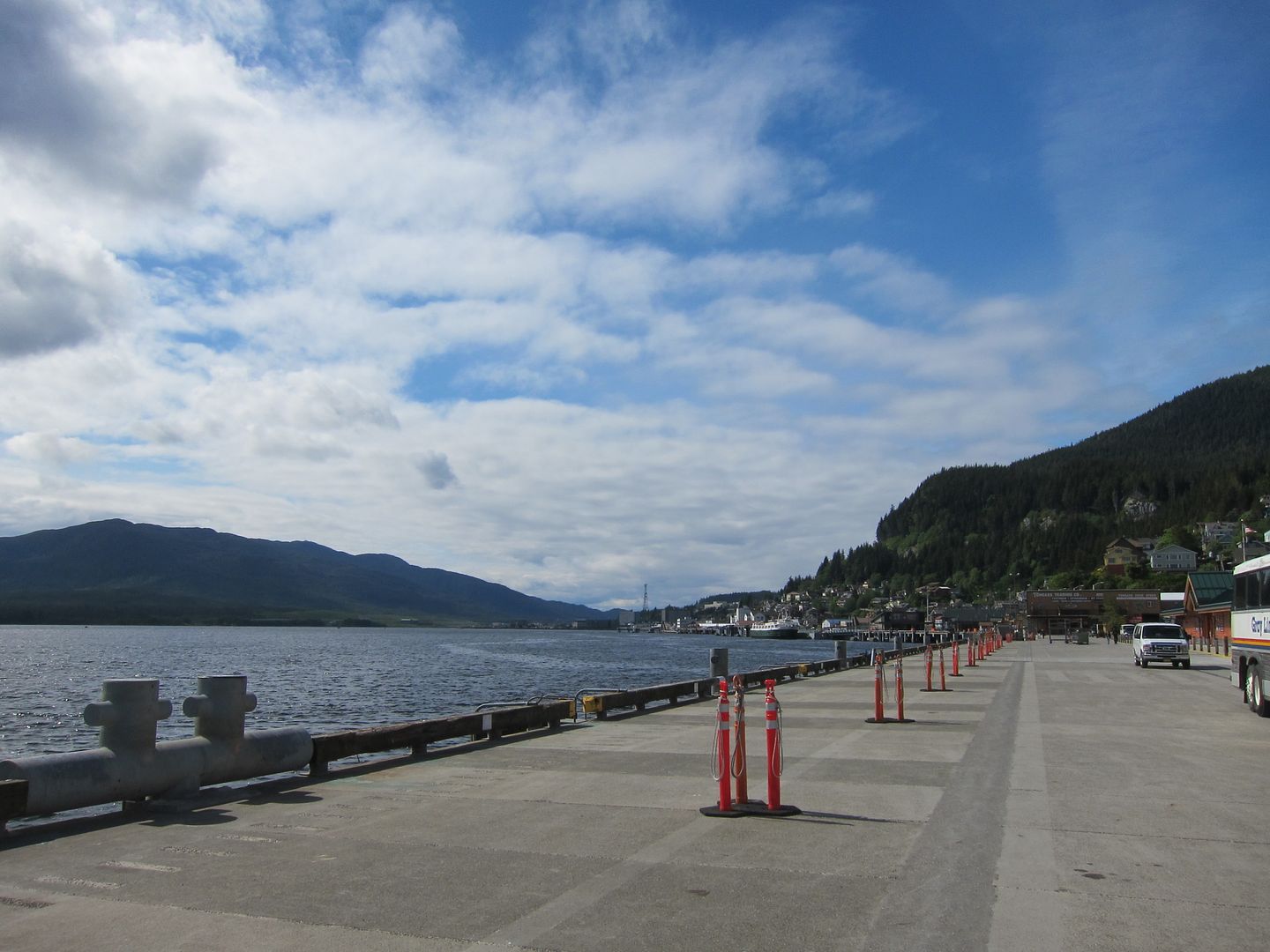
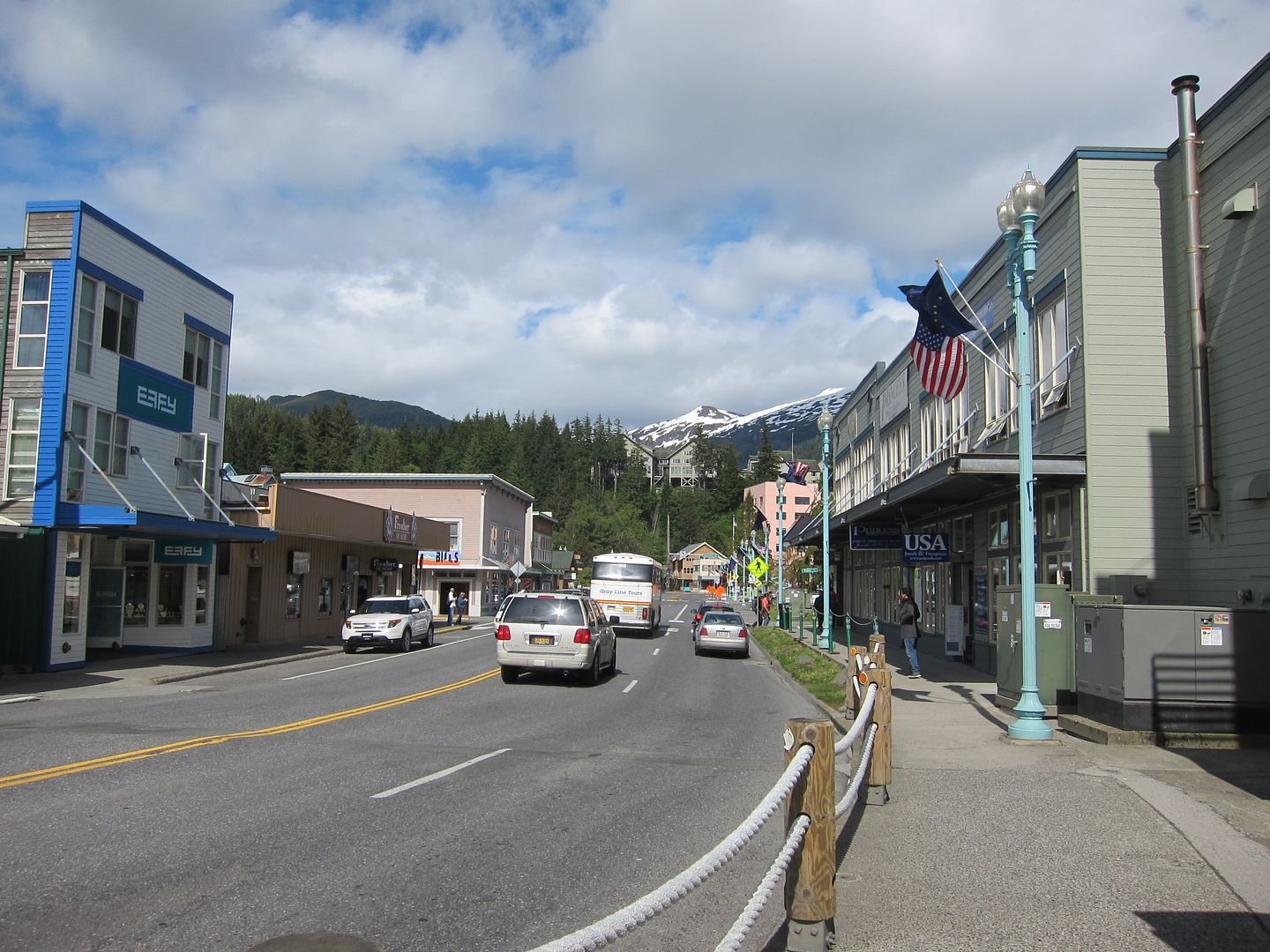
Ketchikan is known for its totem poles scattered around town, so we walked around looking at some of them.
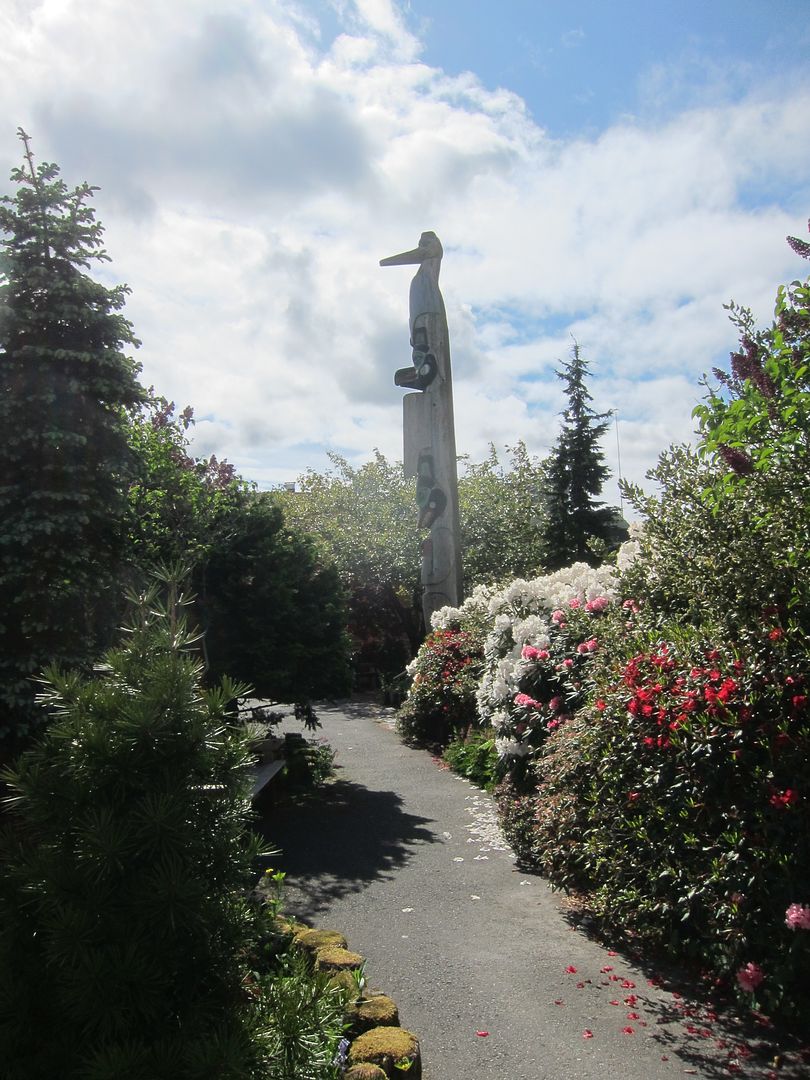
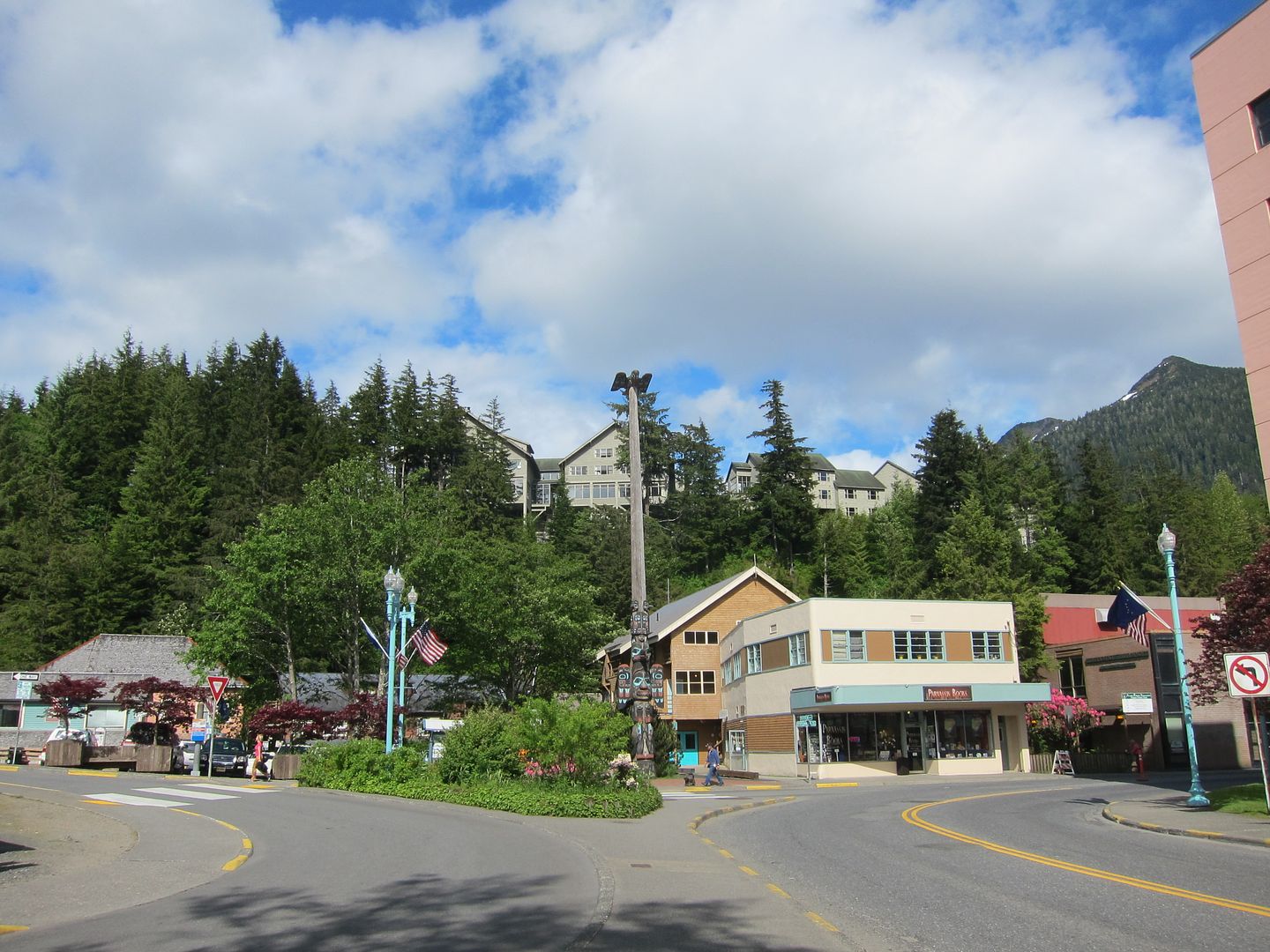
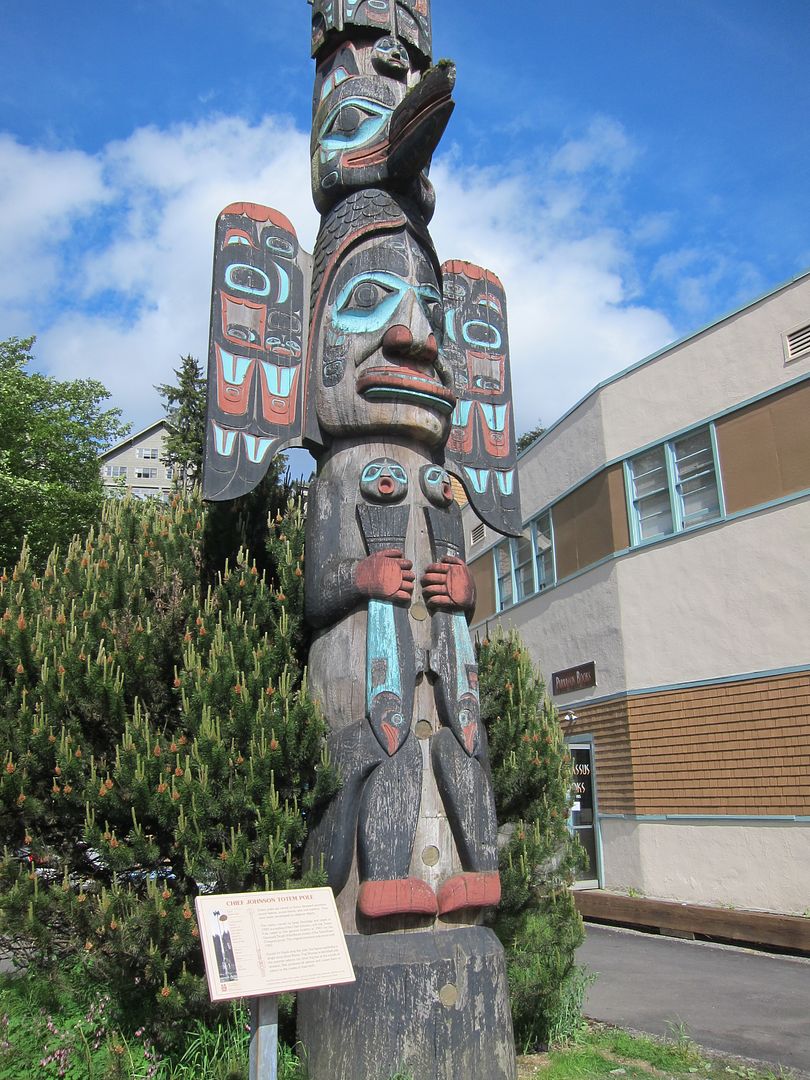
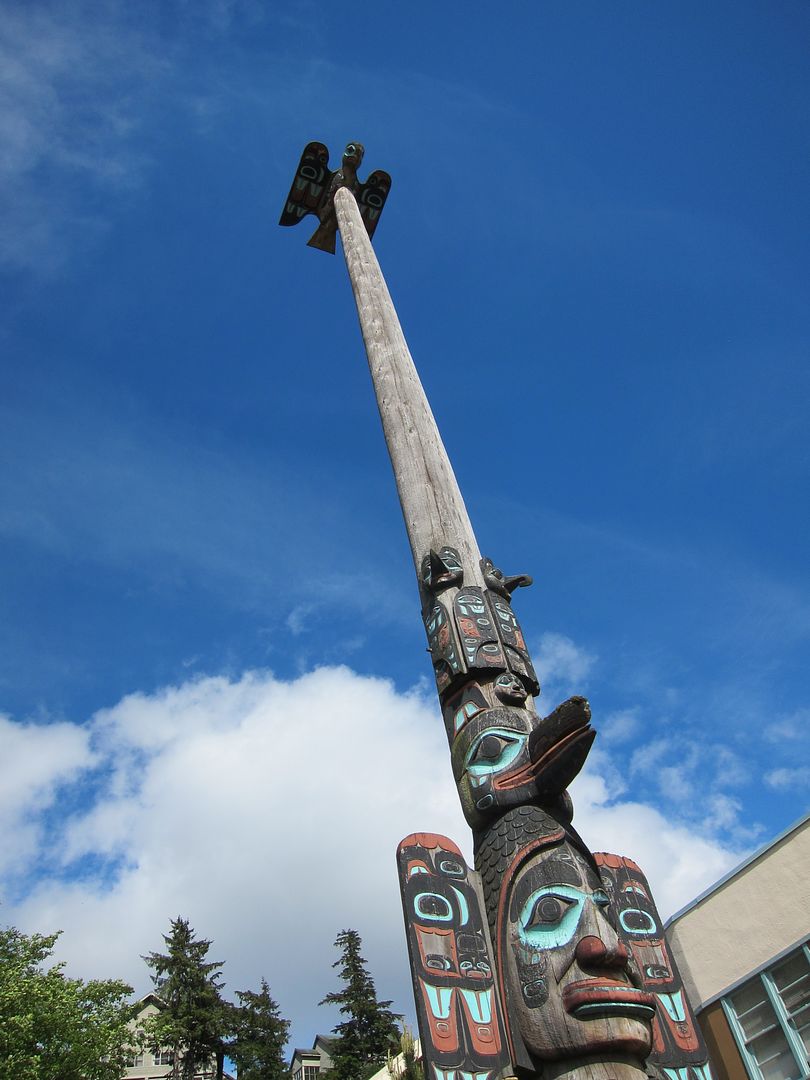
Perhaps Ketchikan’s most famous attraction is its former red-light district along Creek Street.
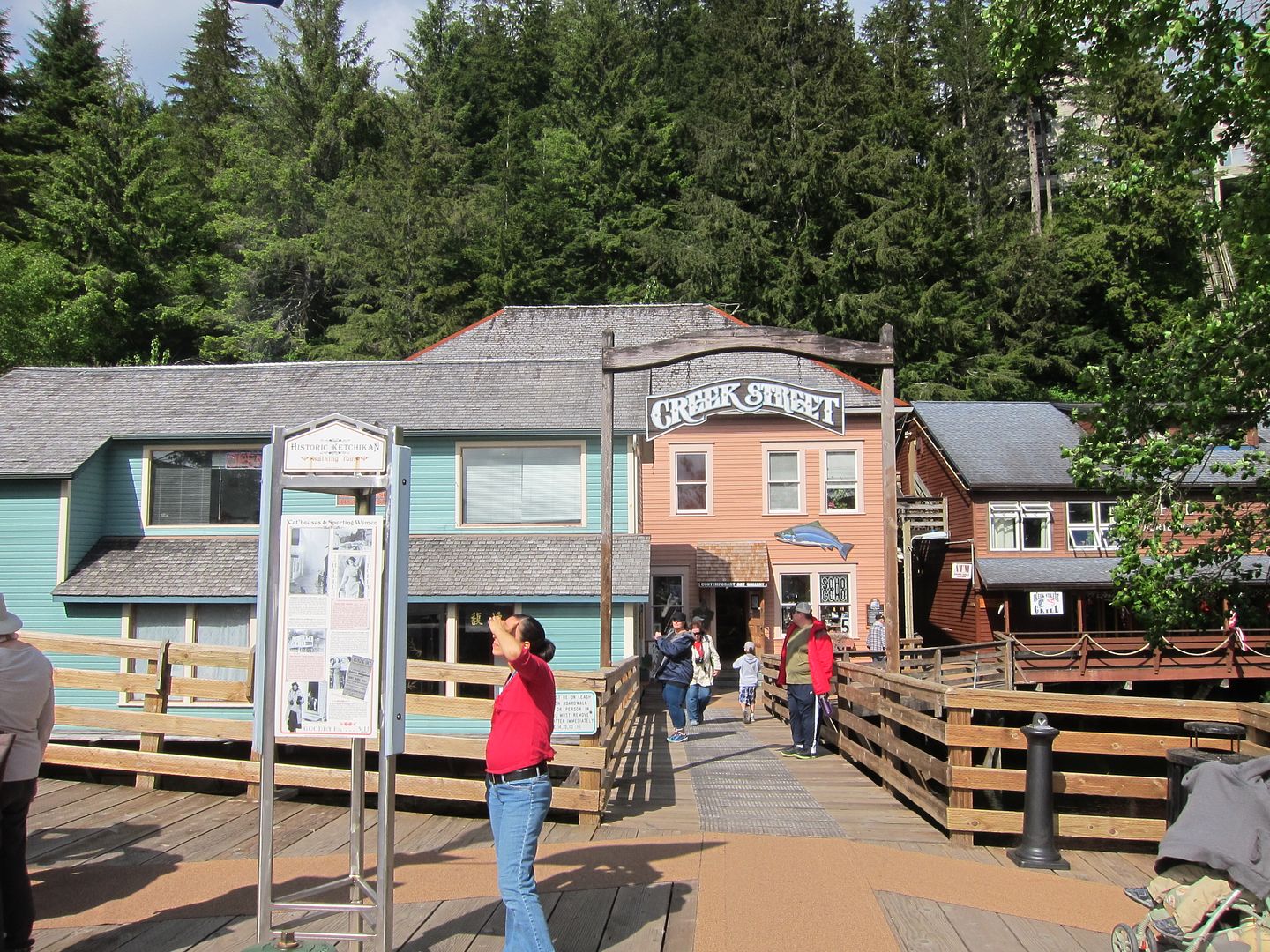
If there was ever a place to build brothels, it’s easy to understand why they chose this spot. The scenery is incredible.
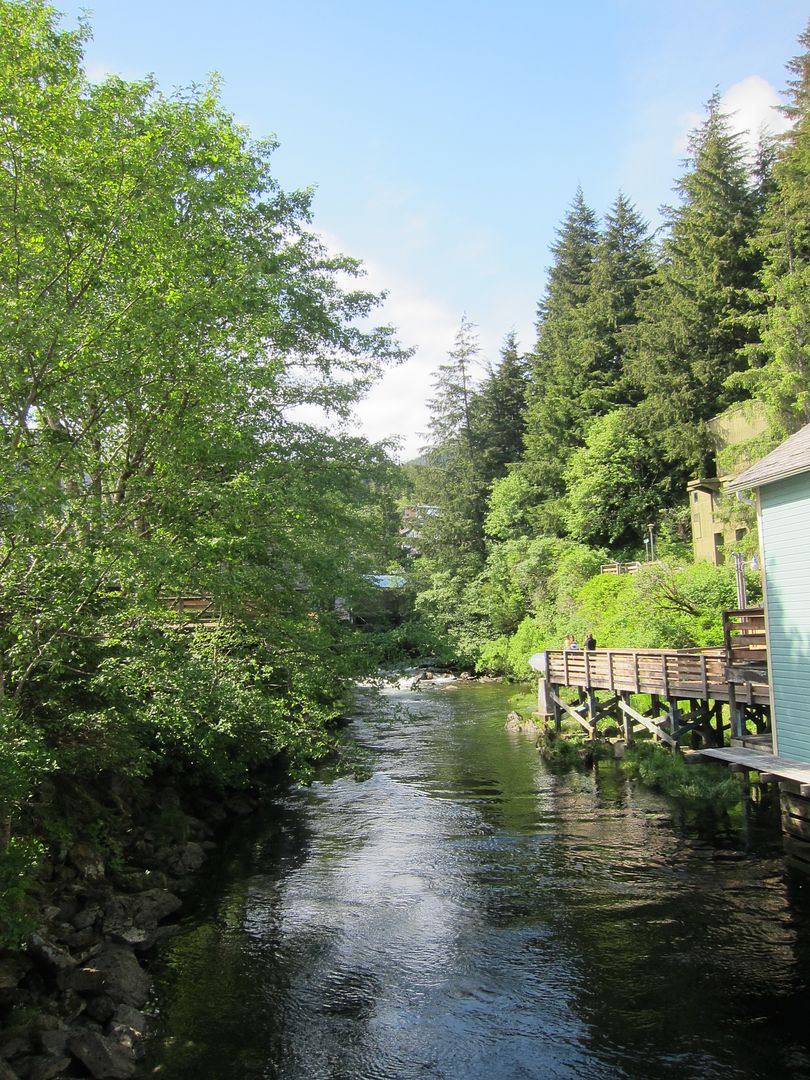
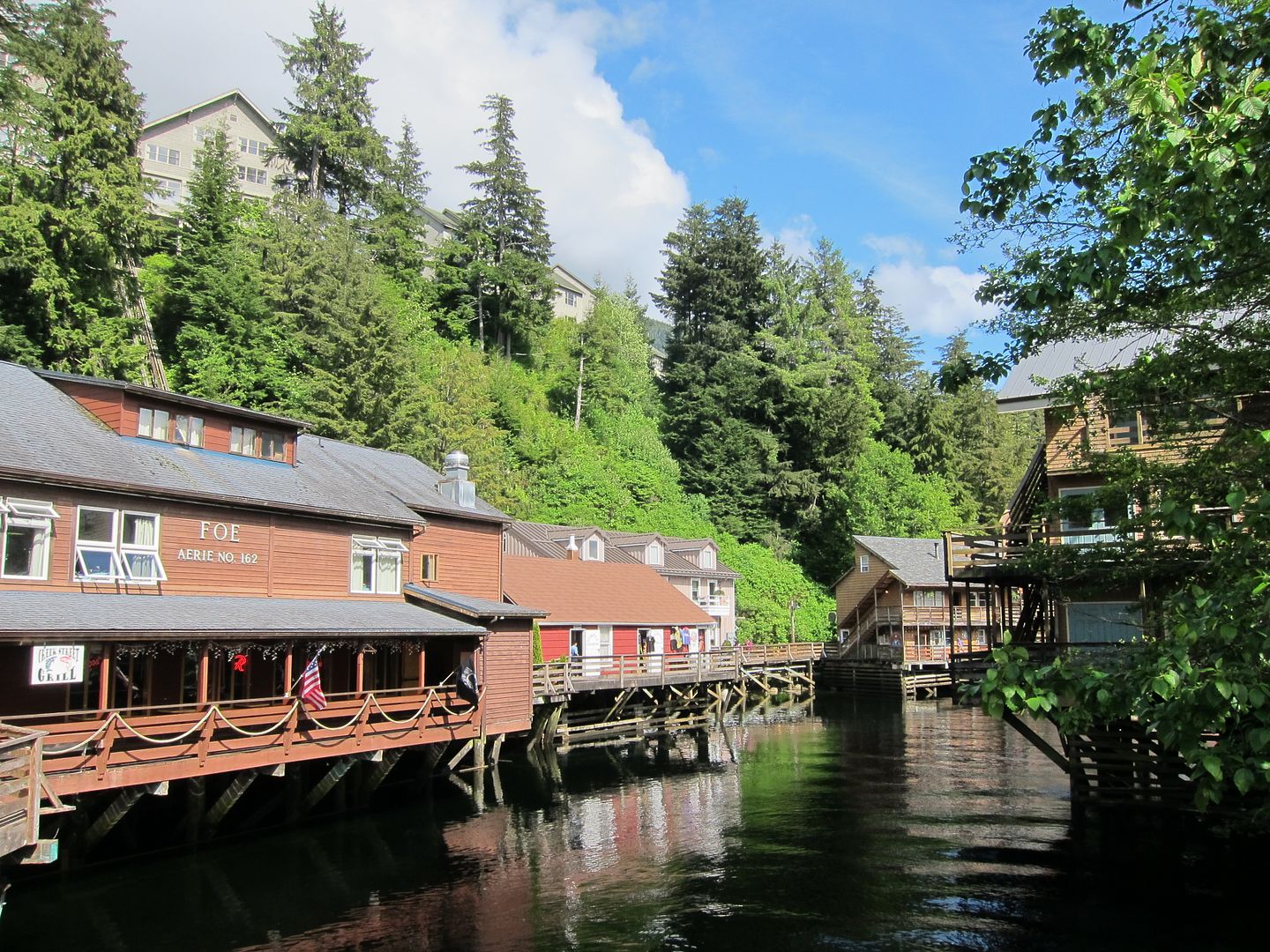
Rather than demolishing these old houses of ill repute, Ketchikan has preserved them with plaques about their history. Many of them actually still function as residences today (though likely with a little less illicit activity going on inside).
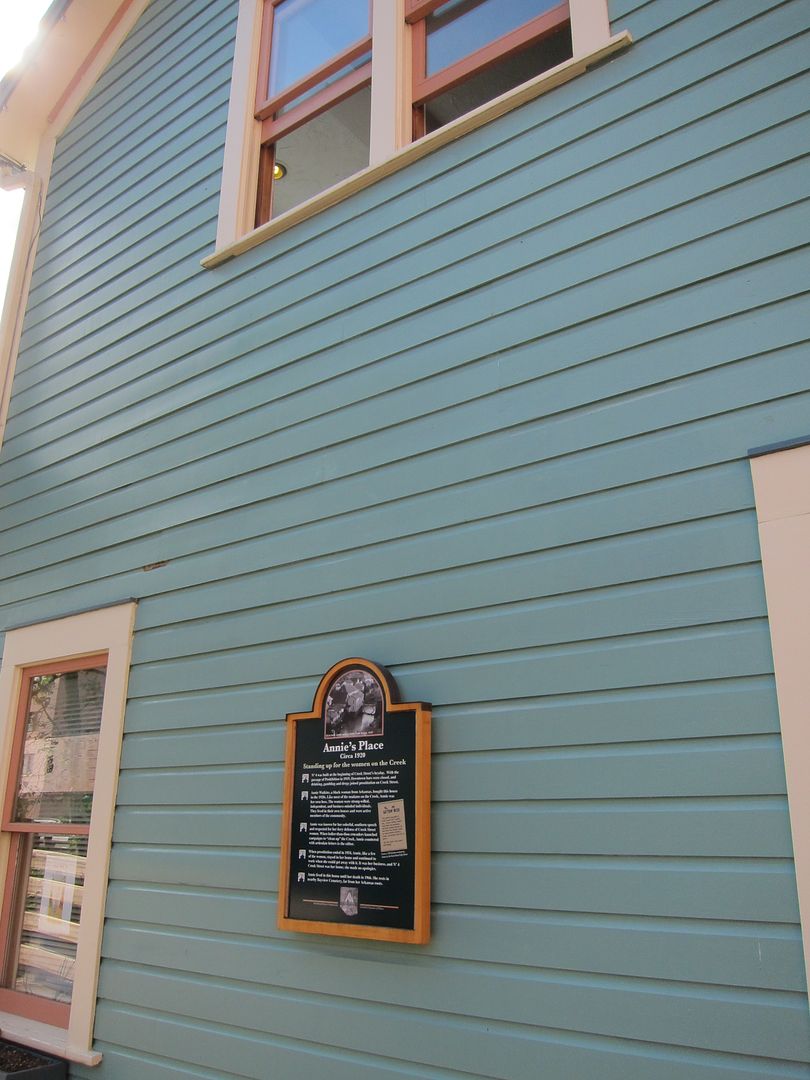

It’s a lot of fun walking along the boardwalks that connect these buildings.

Apparently, this is a great place to watch the salmon jumping later in the season.
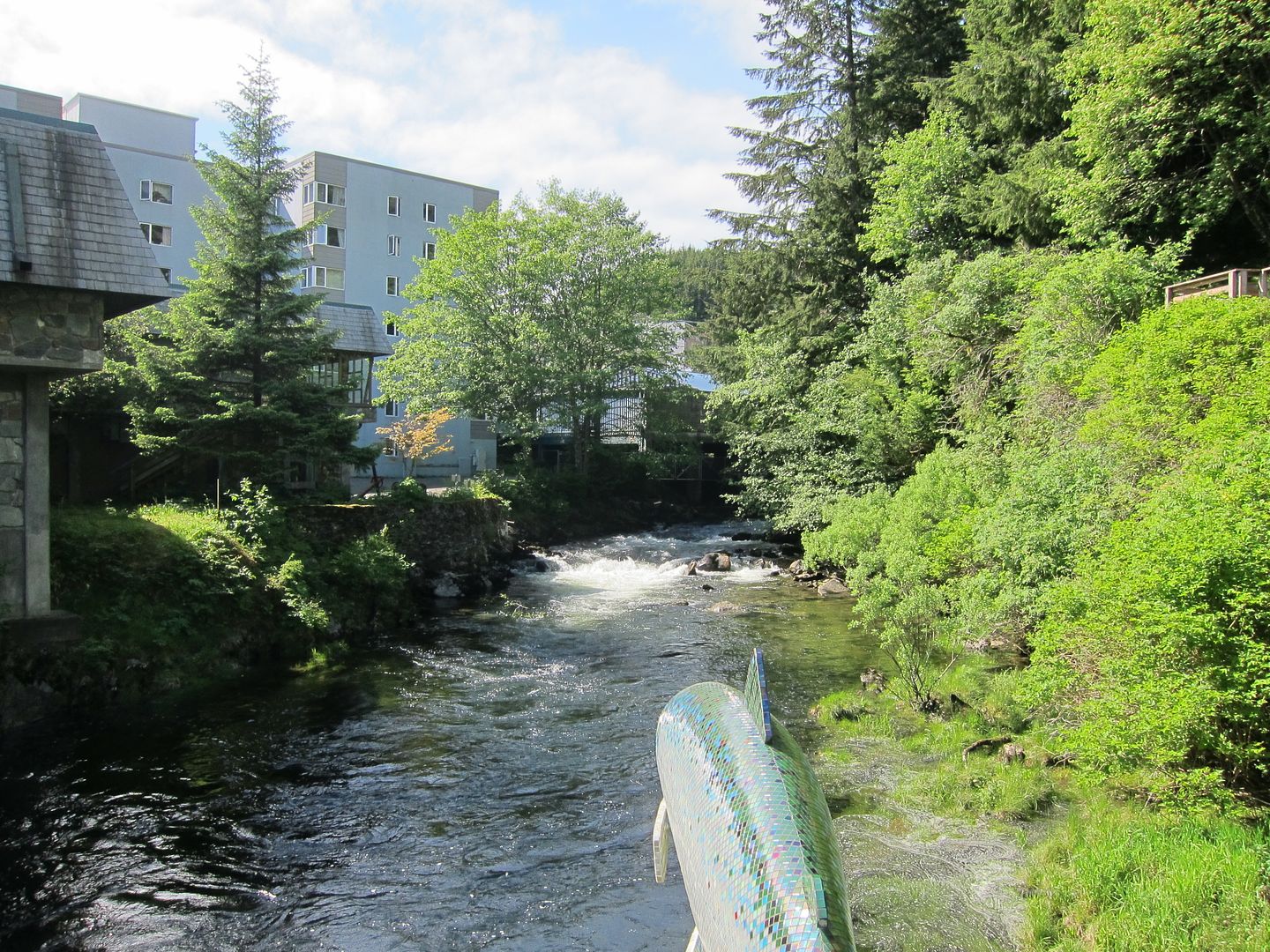

That sign up there points to Married Man’s Trail…

Amongst the various residences, many of these buildings have also been converted into stores (most of which are actually locally owned instead of featuring the same mass-produced merchandise available in all the ports).
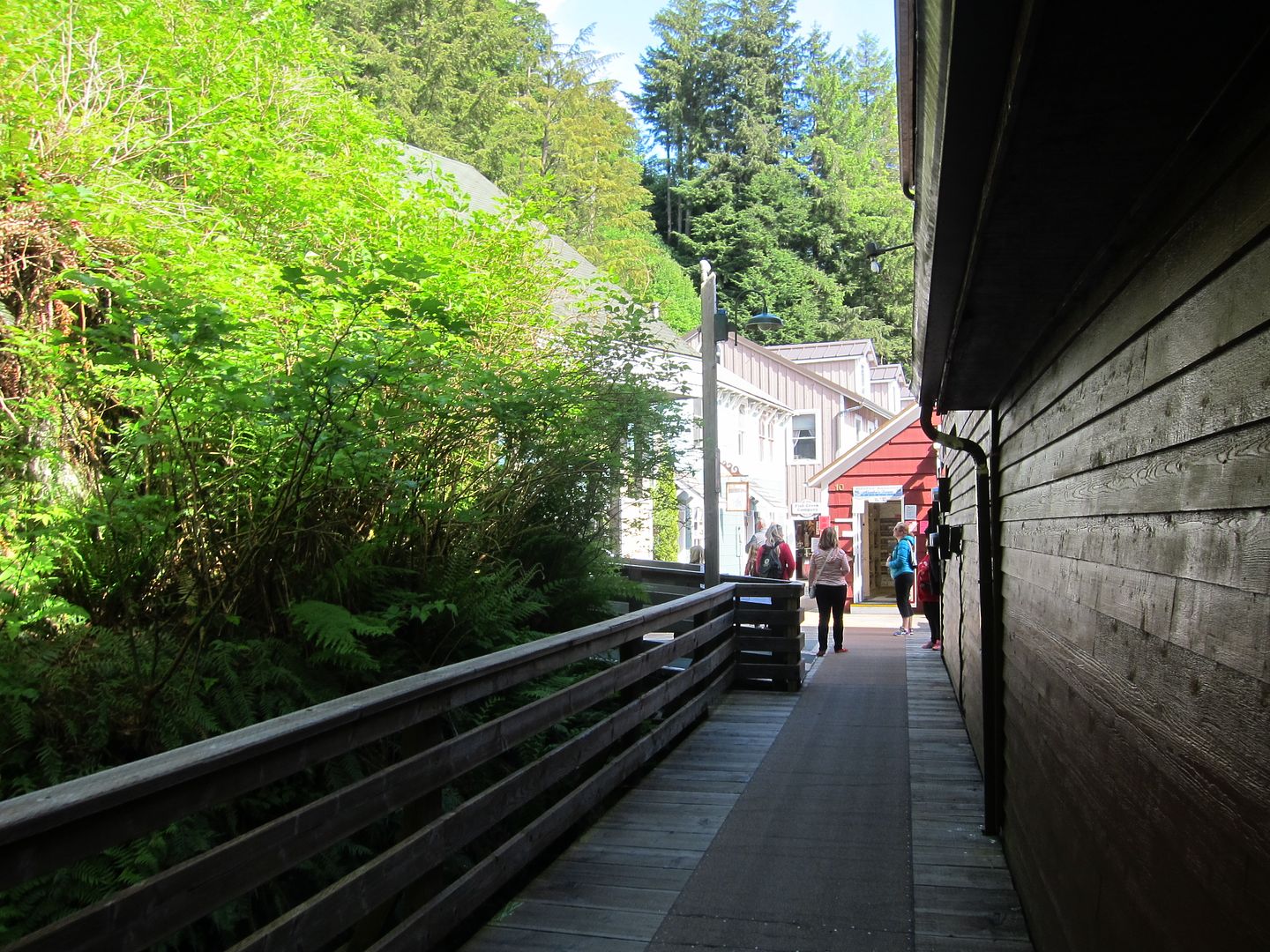
Previous Post | Next Post
Table of Contents
Support the Wandering Mouseketeers and get yourself a little something! Do your online shopping via our Amazon link!
FollowShare
